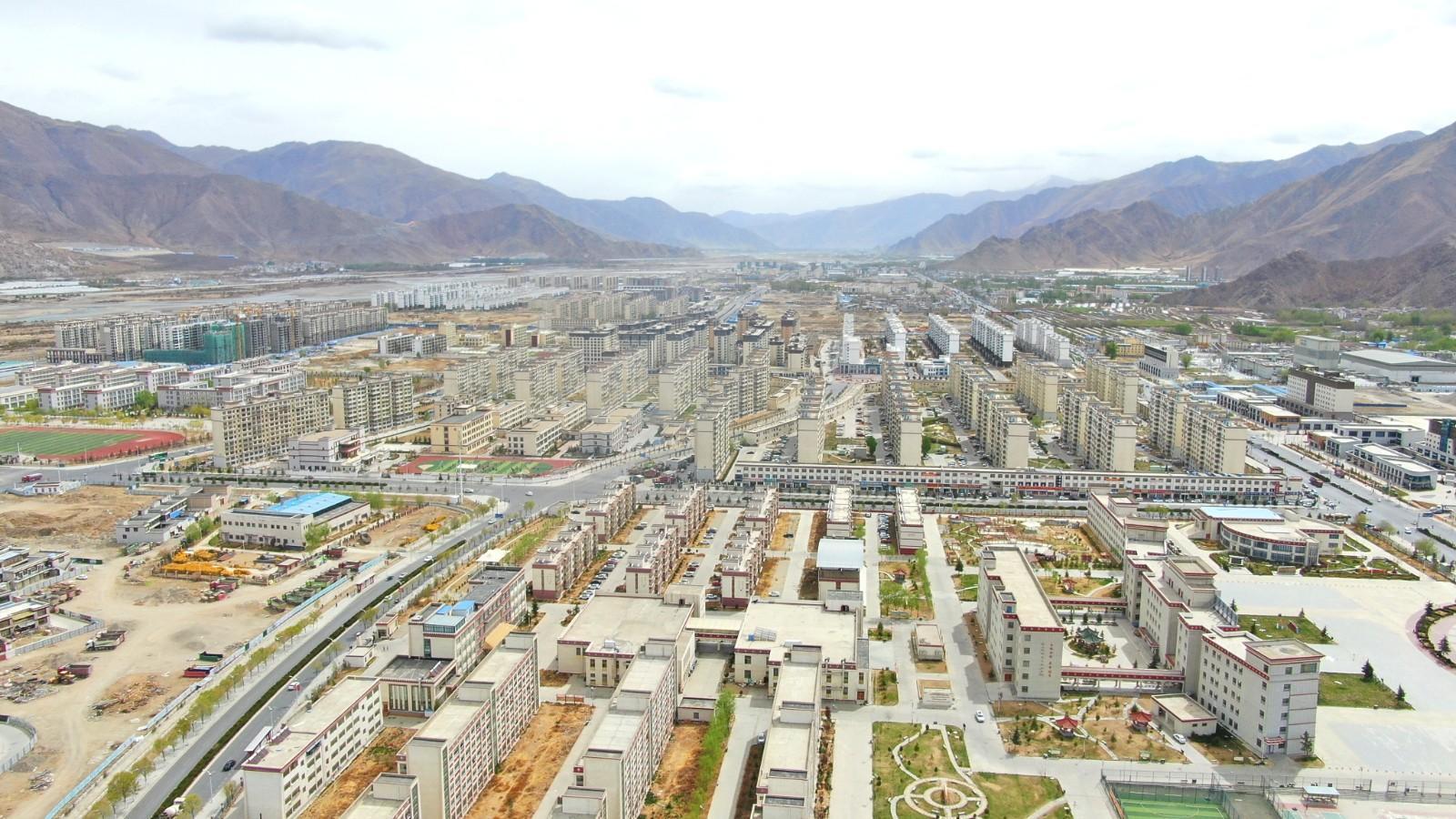By Liu Fang, Zhi Xinghua Source:China Tibet News 2021年05月31日 16:36

Photo shows the panoramic view of Cai Village, Caigungtang Street, Lhasa City, southwest China's Tibet Autonomous Region. [China Tibet News/Pei Cong, Kelsang Lhundrup]
Cai Village of Caigungtang Street is just a few kilometers from Lhasa City, capital of southwest China's Tibet Autonomous Region. Here, rows of modern houses and teaching buildings are neatly arranged under the blue sky. On the road, vehicles flows in a steady stream. Shops, schools, a hospital and a welfare home can be seen nearby.
Ten years ago, Cai was a rural village, where people lived by growing highland barley or grazing cattle. "Before, this village was messy and typically suburban," says Thubten Losang, the first secretary of the party branch of Cai Village.
In 2011, according to the urban planning of Lhasa City, 3900 mu (2.6 km²) land of Cai Village was requisitioned for the construction of the first phase of Lhasa Education City. In 2012, the first phase of land acquisition was completed, people saw a dramatic change in this traditional farming village.
"Urban construction needs a lot of building materials, machinery and labor. This is an opportunity for the development of Cai Village, and we must seize it," says Thubten Losang. Thus the party branch and village committee guide model party members and entrepreneurial leaders to help villagers to embark on the road to wealth.
30-year-old Sogdoi is one of the village's best-known entrepreneurial leaders. Nine years ago, as a truck driver, he keenly scented the business opportunity and organized several villagers to set up the Xianggar Mechanical Team, getting a lot of working opportunities from nearby construction sites.
"At that time, there were more jobs and opportunities, and we were all willing to work hard. As the income of the mechanical team was getting higher year by year, we set up the Suodanla Specialized Farmers and Herdsmen Construction Engineering Cooperative. More than 30 pickup trucks joined the cooperative, and each could bring more than 80,000 yuan RMB of net income to villagers every year," Sogdoi says, "in order to help villagers increase their income, this year, the cooperative set up a brick factory and solved about 20 villagers' employment problems. Now, the road from the village to Lhasa is getting better and better. We plan to build a holiday village so that more villagers can find jobs nearby." Sogdoi's words are full of faith in the future.
In the process of urbanization, Cai Village has developed and expanded the collective economy by becoming a shareholder of the commercial concrete mixing station, opening sand quarry and renting out storefront houses, etc., and has also set up a number of transportation teams, effectively solving the employment problem of the masses and bringing considerable economic income to them. At the same time, relying on the geographical advantage of proximity to Lhasa urban area, Cai villagers are also doing well in migrant work and self-employment.
"With the expansion of the collective economy, it is the common people who benefit the most. In 2020, the total income of the village collective economy reached 15 million yuan RMB, and each villager received a bonus ranging from 4,000 yuan RMB to 15,000 yuan RMB. With the income of individual economy and working outside, the per capita net income of Cai villagers has reached 23,664.9 yuan RMB," Thubten Losang happily says, "after several years of development, the villagers have lived in clean and beautiful houses, and their income is higher year by year. Besides, it is more convenient for the elderly to go to hospital and the children to go to school. Recently, Cai Village has been implementing the gas engineering and electrical renovation projects." Thubten Losang proudly says, "this is the well-off life in my heart."